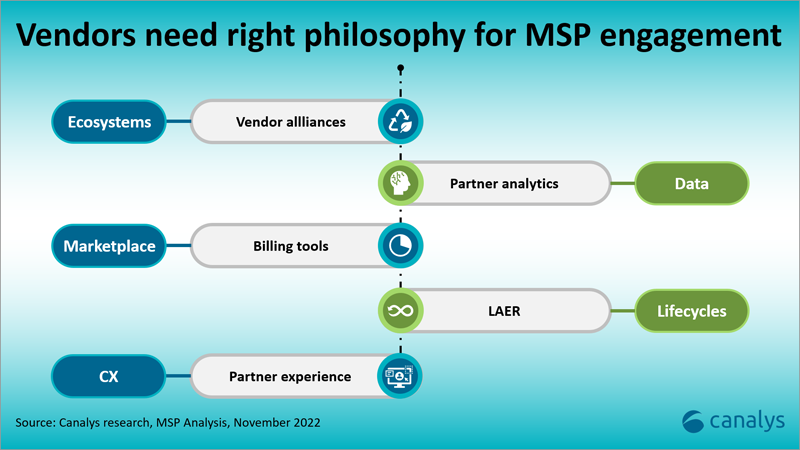Making sense of health-tracking features on TWS
2 November 2022

Partners and vendors are far from united on how best to tackle the growing need for managed services engagement frameworks, or even whether there is a need for them at all. This blog looks at recent research Canalys has conducted to define how vendors should structure their MSP programs and how best to help existing partners with their MSP transformations.
Though managed services have existed in some form or other for decades, real MSP programs, which address even some of the most basic needs of managed service providers, are very much in their infancy and vary widely in their construction. The first problem arises when you ask anyone to define an MSP. Vendors tend to see an MSP as any type of partner with some managed services offering but partners tend to focus on the amount of managed services business they do in proportion to their overall revenue.
The difficulty for a vendor introducing an MSP program is the variety of partners they are trying to address. Some get around this by setting quite strict criteria, such as the number of certified individuals or even the size of the managed services revenue of a partner. Vendors must identify the right kind of MSP for them and their desired goals.
There is often a conflict here. Some vendors are looking for partners that will resell their managed services offerings to end customers. Thus, any partner willing to engage in this practice can be (wrongly) classified by a vendor as an MSP.
For the channel partners themselves, it is about delivering value around the IT estates of their customers. If vendors want to improve their MSP programs, they will need to identify what value their partners are creating, whether this results in greater revenue to the vendor or not.
The primary issue with all vendors creating MSP programs is that they see themselves first in the mind of the partners. Resell programs are about generating more immediate revenue from each partner through financial incentives and partner enablement methods, such as marketing and funded heads. Within this is always the question of partner wallet share: how much of my partner’s resell revenue is generated by my product versus that of another competitor? In the end, it is all about volume.
This attitude does not work for MSP programs. A completely different approach is needed, one that is less individualistic. The key issue is a difference in value creation. In a resell program, value is essentially in the quality of a vendor’s product and the ability of a partner to properly integrate the right product into a customer’s current IT environment.
For MSPs, a vendor’s product is not the value driver but merely an enabler. The value is created between the partner and the customer. How should a vendor generate a program that acknowledges that it is the least important part of the equation? It goes against traditional thinking, and yet is necessary.
The most forward-thinking vendors see themselves as part of a group. Call it an ecosystem, a technology stack, a community, or whatever you want, but it starts with acknowledging you are not the only vendor in a partner’s portfolio or the only product in a customer’s IT estate. To drive greater value as a vendor, you must go beyond the product. You must go to the level of service you deliver to the partner in helping them to deliver greater value to the customer through more robust technology integrations, billing engines, marketing efforts and localized support.
All vendors have different requirements and channel strategies. That is not a barrier to creating a program or an engagement framework to work with partners delivering managed services. There is no one-size-fits-all strategy, but that does not mean there is not a right way and a wrong way to build an MSP program.
Despite this, two things are clear no matter the maturity of partners in managed services. Firstly, Vendors need to improve their billing flexibility to reflect the needs of customers, which can vary from annual, upfront purchasing to full, monthly, as-a-service models. 69% of partners want to bill their managed services monthly, so anything vendors can do to help them mitigate the risk of payment defaults and customer insolvency the better.
Secondly, partners need vendors to communicate among themselves more, and work to improve their integrations between their respective products and platforms. This will help partners to manage fewer of the administrative tasks of creating single billing for customers and improve the integration of products in customers’ IT estates.
We cannot expect all MSP programs to fulfill the same criteria, as vendors and their partner communities vary so much, and there is no panacea. In the discussion between partners and vendors, there is not even a consensus as to whether MSP programs are needed at all. If these discussions provoke a better understanding of the changing vendor/partner relationship, and the value created by partners for their customers, then any MSP program will start on the right foot.